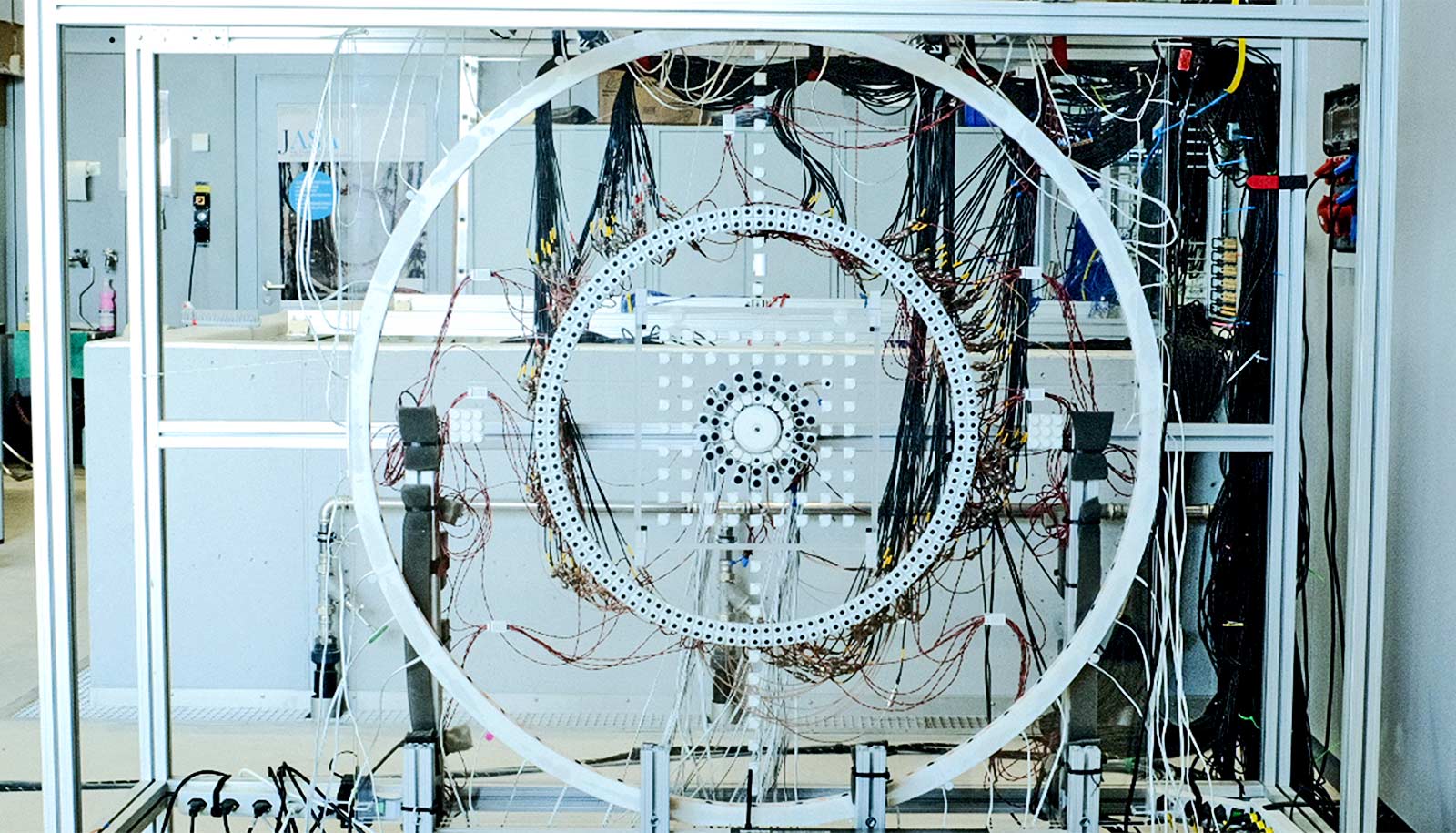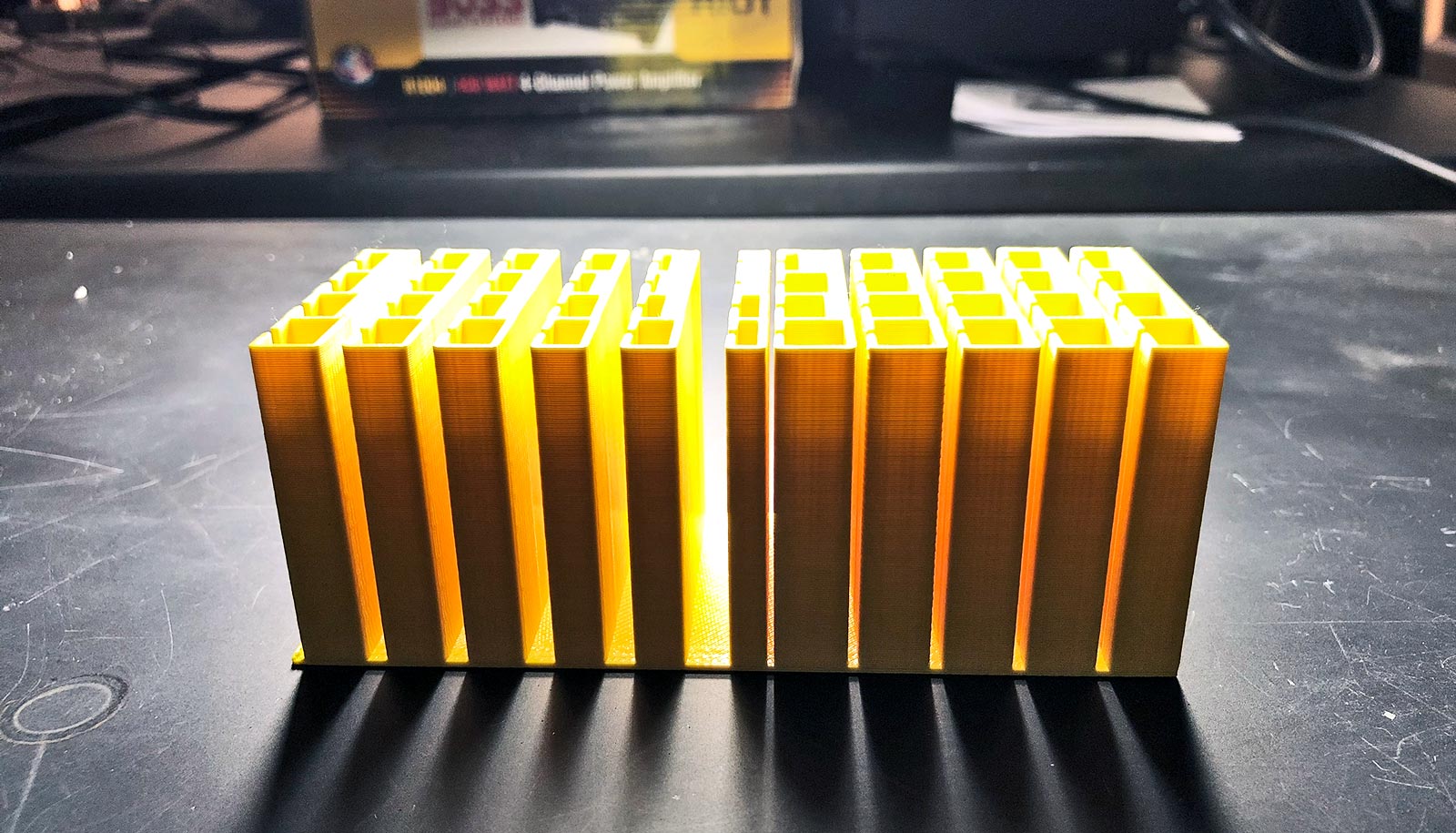Researchers have devised a method of using acoustics to both conceal and simulate objects.
When listening to music, we don’t just hear the notes produced by the instruments, we are also immersed in its echoes from our surroundings. Sound waves bounce back off the walls and objects around us, forming a characteristic sound effect—a specific acoustic field. This explains why the same piece of music sounds very different when played in an old church or a modern concrete building.
Architects have long been capitalizing on this fact when building, say, concert halls. However, the principle can also be transferred to other applications: objects hidden underground can be visualized by measuring how sound waves from a known source are reflected.
Some scientists want to go one step further and systematically manipulate the acoustic field to achieve an effect that shouldn’t exist per se, given the real-life situation. For instance, they are attempting to create an illusory audio experience that tricks the listener into believing they are in a concrete building or an old church. Alternatively, objects can be made invisible by manipulating the acoustic field in such a way that the listener no longer perceives them.
Usually, the desired illusion relies on using passive methods that involve structuring the surfaces with the help of what are known as metamaterials. One way of hiding an object acoustically is to coat its surface and stop it from reflecting any sound waves. However, this approach is inflexible and usually works only within a limited frequency range, making it unsuitable for many applications.
Active methods seek to achieve the illusion by superimposing another layer of sound waves. In other words, by adding a second signal to the initial acoustic field. However, until now the scope for using this approach has also been limited, as it works only if the initial field can be predicted with some certainty.
Now a group headed by Johan Robertsson, professor of applied geophysics at ETH Zurich, has worked with scientists from the University of Edinburgh to develop a new concept that significantly improves the active illusion. Led by Theodor Becker, a postdoc in Robertsson’s group, and Dirk-Jan van Manen, the senior scientist who was instrumental in designing the experiments, the researchers have managed to augment the initial field in real time, as they report in Science Advances. As a result, they can make objects disappear and they can mimic non-existent ones.
To achieve the special acoustic effects, the researchers installed a large test facility for the project in the Centre for Immersive Wave Experimentation at the Switzerland Innovation Park Zurich in Dübendorf. Specifically, this facility allows them to mask the existence of an object measuring roughly 12 centimeters (about 4.72 inches) or simulate an imaginary object of equal size.
The target object is enclosed in an outer ring of microphones as control sensors and an inner ring of loudspeakers as control sources. The control sensors register which external acoustic signals reach the object from the initial field. Based on these measurements, a computer then calculates which secondary sounds the control sources must produce to achieve the desired augmentation of the initial field.
To mask the object, the control sources emit a signal that completely obliterates the sound waves reflected off the object. By contrast, to simulate an object (also known as holography), the control sources augment the initial acoustic field as if sound waves were bouncing off an object at the center of the two rings.
For this augmentation to work, the data measured by the control sensors must be transformed instantaneously into instructions for the control sources. To control the system, the researchers therefore use field-programmable gate arrays (FPGAs) with an extremely short response time.
“Our facility allows us to manipulate the acoustic field over a frequency range of more than three and a half octaves,” Robertsson says. The maximum frequency for cloaking is 8,700 Hz and 5,900 Hz for simulating. To date, the researchers have been able to manipulate the acoustic field on a surface in two dimensions. As a next step, they want to increase the process to three dimensions and extend its functional range. The system currently augments airborne sound waves. However, Robertsson explains, the new process could also produce acoustic illusions under water. He envisages a vast array of potential uses in different fields, such as sensor technology, architecture, and communications, as well as in the education sector.
The new technology is also highly relevant for the earth sciences. “In a lab, we use ultrasound waves with a frequency of over 100 kHz to determine the acoustic properties of minerals. In contrast, in the field, we study underground structures with seismic waves at a frequency of less than 100 Hz,” Robertsson says. “The new process will enable us to help bridge this ‘dead zone.'”
The research appears in Scientific Advances.
Source: ETH Zurich



